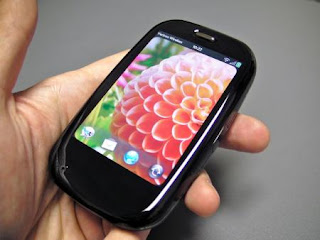The past two days have seen the release of some truly remarkable devices from Motorola, HTC, LG to name a few. The field is pretty equal with a phones and tablets at this years CES. Some ten devices for Verizon were announced today alone, notably the Moto Xoom, the first Honeycomb device in the world.
Motorola kicked it off yesterday with the the Motorola Xoom and Droid Bionic for Verizon, and the Motorola Attrix destined for AT&T's LTE network.
The Motorola Xoom is the first Honeycomb device ever and it will be launched later this quarter with 3g capabilities, upgradable to 4g, a 2 MP front facing camera, 5 MP rear camera, a 1GHz dual core Tegra 2 processor, wifi, and 32 GB of onboard storage.
Information regarding the Droid Bionic can be found on my last
post
Thirdly for Motorola, the one phone to rule them all. It sports a 4.3" display, 1.3 MP front facing camera, 8 MP rear camera, 1 GHz dual core tegra 2 processor, and a whopping 1GB RAM, froyo with MotoBlur skin on it, but the coolest/probably useless but still awesome feature is that it can be docked up to turn into a desktop or laptop computer! The Attrix is regarded as the "Most Powerful Smartphone In The World" and specs wise, it sure is!
Next we move on to the world of HTC, which is just one phone. But what a phone it is! The HTC Thunderbolt. This device is probably going for a March release in my opinion, and will be the first 4g LTE device release for Big Red. It has a 4.3" screen, 1.3 MP ff camera, 8 MP camera with dual LED flash, Sense 2.0, Froyo with a promise to go to Gingerbread soon, a kickstand, 1 GHz snapdragon processor, and Super LCD Display.
How will this monster fair against it's dual core competition?
For your average user who will use this for messaging, email, web browsing, and some gaming I think it will not make too much of a difference whether you use a dual core or not. It will only add to the flow of the software and drain the battery faster. With 4g running I do not think that you will notice if you have a dual core, it will be super fast with or without one. Now for people who are hard core 3d gamers on their phones it is a different story. The dual core will help power any game you throw at it with ease, it can even support the some of the industry's most powerful games on your normal system. That's pretty damn good if you're asking me!
Though I still want to know how these phones will fair in a battery test as well as quadrant standard.
Can't wait until these devices come out! Hopefully I can review the Thunderbolt when it comes out.















